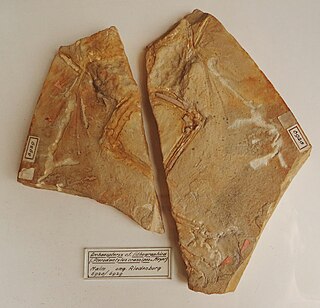
In baseball, a stolen base occurs when a runner advances to a base unaided by other actions and the official scorer rules that the advance should be credited to the action of the runner. The umpires determine whether the runner is safe or out at the next base, but the official scorer rules on the question of credit or blame for the advance under Rule 10 of the MLB's Official Rules.

Selenocosmia crassipes, synonym Phlogius crassipes, also known as the "Queensland whistling tarantula", "barking spider" or "bird-eating tarantula" is a species of tarantula native to the east coast of Queensland, Australia. The name "whistling tarantula" comes from its ability to produce a hissing noise when provoked, a trait it shares with other Australian theraphosids. This hissing is produced by the spider stridulating a patch of setae associated with its chelicerae. It has also been called the "eastern tarantula". The species name crassipes is Latin for "fat leg" referring to the relatively fat front legs.
Chirothecia is a genus of jumping spiders that was first described by Władysław Taczanowski in 1878. Chirothecia is very similar to Bellota, but can be distinguished by the following characteristics: a much wider and taller cephalothorax ; a much longer eye area ; the posterior median eyes are always closer to the anterior lateral eyes than the posterior lateral eyes.

Pontederia crassipes, commonly known as common water hyacinth, is an aquatic plant native to South America, naturalized throughout the world, and often invasive outside its native range. It is the sole species of the subgenus Oshunae within the genus Pontederia. Anecdotally, it is known as the "terror of Bengal" due to its invasive growth tendencies.

The 1878 FA Cup final was an association football match between Wanderers F.C. and Royal Engineers A.F.C. on 23 March 1878 at Kennington Oval in London. It was the seventh final of the world's oldest football competition, the Football Association Challenge Cup. Wanderers had won the Cup in the previous two seasons and on four previous occasions in total, including the first FA Cup final in 1872, in which they defeated the Engineers. The Engineers had also won the Cup, having defeated Old Etonians in the 1875 final.
The 1878 Open Championship was the 18th Open Championship, held 4 October at Prestwick Golf Club in Prestwick, South Ayrshire, Scotland. Jamie Anderson won the Championship for the second successive year, by two strokes from runner-up Bob Kirk.
The 1878 Princeton Tigers football team represented the College of New Jersey, then more commonly known as Princeton College, in the 1878 college football season. The team finished with a 6–0 record and allowed only one goal. The Tigers were retroactively named national champions by the Billingsley Report, National Championship Foundation, and Parke H. Davis. This season marked Princeton's eighth national championship, and one of 11 in a 13-year period between 1869 and 1881. The team's captain was Bland Ballard.

The 1878 Harvard Crimson football team represented Harvard University in the 1878 college football season. They finished with a 1–2 record. The team captain, for the second consecutive year, was Livingston Cushing.

The 1878 Yale Bulldogs football team represented Yale University in the 1878 college football season. The Bulldogs finished with a 4–1–1 record. The team recorded five shutouts and outscored its opponents by a combined total of 7 to 1.

Dorcadion is a genus of longhorn beetles of the subfamily Lamiinae.

The 1878 Penn Quakers football team represented the University of Pennsylvania in the 1878 college football season. They finished with a 1–2–1 record.

Somatidia is a genus of longhorn beetles of the subfamily Lamiinae, containing the following species:
Dorcadion lativittis is a species of beetle in the family Cerambycidae. It was described by Kraatz in 1878.
Dorcadion ribbei is a species of beetle in the family Cerambycidae. It was described by Kraatz in 1878.
Dorcadion mystacinum is a species of beetles in the family Cerambycidae. It was described by Ballion in 1878. It is known from Kazakhstan and nanistan.

Dorcadion cinerarium is a species of beetle in the family Cerambycidae. It was described by Johan Christian Fabricius in 1787, originally under the genus Lamia. It is known from Ukraine, Azerbaijan, and Russia.

Dorcadion scabricolle is a species of beetle in the family Cerambycidae. It was described by Dalman in 1817. It is known from Azerbaijan, Iran, Armenia, and Turkey.
Dorcadion abakumovi is a species of beetle in the family Cerambycidae. It was described by Thomson in 1864.
Dorcadion glycyrrhizae is a species of beetle in the family Cerambycidae. It was described by Pallas in 1773.

Ostromia is a genus of anchiornithid theropod dinosaur from the Late Jurassic Painten Formation of Germany. The genus contains a single species, O. crassipes, named by Christian Foth and Oliver Rauhut in 2017.












